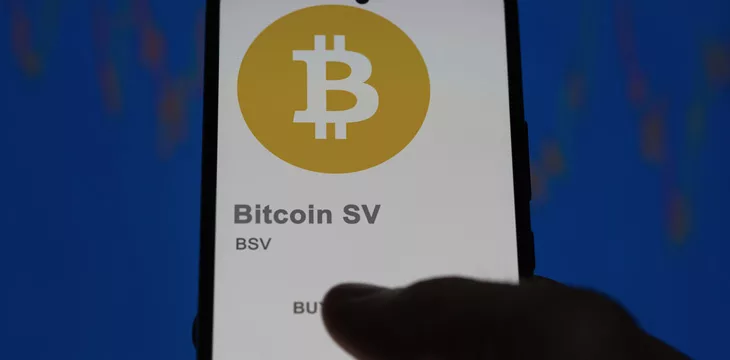
|
Getting your Trinity Audio player ready... |
Forbes recently released its first-ever list of “Good-for-Nothing” blockchains, including Cardano, the XRPL, BSV, and others.
Over the last few years, I’ve grown accustomed to rolling my eyes at mainstream takes on blockchain technology, but this one caused me to do an actual double-take. Not only is BSV far from a good-for-nothing blockchain, as I’ll demonstrate momentarily, but Forbes’ understanding of what constitutes blockchain utility is fundamentally mistaken.
While that doesn’t really surprise me, I am slightly shocked they published such a brash list based on totally mistaken premises. Allow me to explain.
Forbes just doesn’t get what blockchain utility is
NEWS: Forbes posts “Good-for-nothing blockchains” pic.twitter.com/qjmo55liHz
— Pluid (@tryPluid) April 27, 2024
Let’s start at the top and work our way down, shall we? There are two mistakes in the very first sentence above the table:
First, the 20 blockchains listed do not “command a total market value of more than $100 billion.” There is nowhere near that amount of value in any blockchain. Market caps are calculated by the average price paid per token multiplied by the circulating supply.
Truthfully, most of the blockchains, BSV included, would be lucky if they were to command $100 million in real value and liquidity.
Second, the statement that they are “unproven and have little utility other than crypto trading” made me guffaw. The BSV token is near-universally delisted on so-called crypto exchanges, making it unreadable to all but its most ardent enthusiasts. The only reason anyone would buy it is to use it in one of the many apps that, ironically, demonstrate the BSV blockchain’s utility.
What BSV is good for
“What utility?!” I can hear the critics scream. “Isn’t BSV just a scam?”
Far from it! BSV is the blockchain of choice for entrepreneurs who require micropayments
at scale and want to utilize timestamped immutable records to revolutionize industries.
Just ask IBM (NASDAQ: IBM); it has teamed up with BSV startups to build the Trace App
and Sentinel Node, offering truly innovative tools in global logistics and cybersecurity. Neither application could exist on any other blockchain besides BSV.
Speaking of apps, a quick overview of some of the top ones on the BSV blockchain will demonstrate my point nicely.
HandCash – This pioneering BSV wallet shows just how easy and user-friendly Bitcoin payments can be. Users can send instant payments of any size to handles like $RealCoinGeek instead of ugly strings of numbers and letters. If we ever want blockchain technology to go global, we need to make the experience of using it simple and straightforward. HandCash does this, which is probably why it’s seeing record numbers of users and transactions.
Sentinel Node – On average, it takes 221 days to detect a computer system breach. Hacks and cybersecurity failures cost businesses tens of billions annually. Sentinel Node is a tool that utilizes hashing and timestamping on BSV to record snapshots of files and networks, reducing the average detection time to just a few seconds. In doing so, it makes it impossible for hackers to delete logs and holds administrators accountable.
Trace App – IBM teamed up with Gate2Chain to create a blockchain platform that allows anyone to create digital twins of items they want to trace across global supply chains. It’s estimated that $100+ billion in goods disappear in supply chains every year, showcasing the magnitude of this problem. Trace App makes it much more difficult to lose anything by tracking the chain of custody from production to delivery.
Haste Arcade – Entire new models are possible in gaming, thanks to BSV micropayments.
No longer are users beholden to subscriptions, in-game purchases, or ads and data harvesting. Micropayments make it possible for everyone to pay and get paid without all the middlemen and inefficiencies. They also unlock new possibilities like Instant Leaderboard Payouts. All of this comes together on BSV and nowhere else, which is why Haste chose to build it on this blockchain.
LaMint – Content creators can benefit most from micropayments at scale. Whereas platforms like YouTube and OnlyFans are owned by giant corporations that can shut down accounts on a whim and have high minimum payments and payouts, LaMint is showing what is possible on a blockchain that delivers on the promise of ‘small, casual transactions.’ Creators own their content and get paid every time someone interacts with it; this is the future of content creation.
BSV is the only option for many of these apps
None of these tools could exist on any other blockchain. Many BSV apps moved from Ethereum because they couldn’t work due to the fees and limited throughput capacity. The same tiny fees the Forbes list mocks make BSV home to these revolutionary tools and apps.
And yet, BSV is just getting started. Teranode will take the transaction capacity to millions per second, and as this first crop of apps demonstrates what can be done, more developers and entrepreneurs will come.
BSV is far from a good-for-nothing blockchain. A modicum of research would have revealed that it is technically superior to any competitor. While its market cap is low due to artificial suppression, that doesn’t matter when it comes to what the tech can do. Of course, one has to look past irrelevant metrics like market cap and peculiar metrics like ‘market cap to fees’ and understand the bigger picture to see that.
Permissioned vs permissionless blockchain: The benefits & trade-offs

 11-21-2024
11-21-2024


